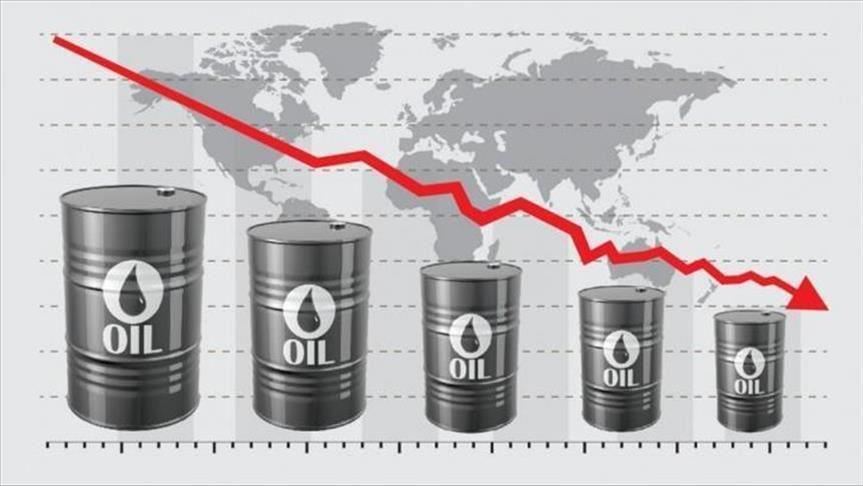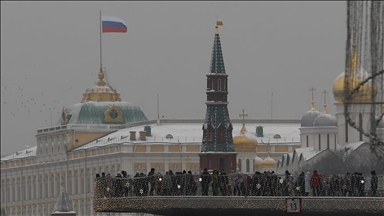
ANKARA
The recent plummet in crude oil prices is expected to chiefly hit the economies of Saudi Arabia, Russia, and U.S. shale oil producers, especially if prices continue with historic lows and if OPEC fails to make deeper output cuts.
Saudi Arabia-led OPEC and Russia-spearheaded non-OPEC could not agree on measures to further curb oil production on Friday after their seven-hour meeting ended in the Austrian capital Vienna.
This caused a slump in crude prices with international benchmark Brent sinking as low as $31.27 per barrel during early trading on Monday while American benchmark West Texas Intermediate fell to as much as to $27.34 a barrel.
While both benchmarks marked their lowest levels since Feb. 12, 2016, they also posted more than a 30% decline -- the largest single daily percentage loss since January 1991 during the Gulf War.

Market share worries
Russia had joined forces with Saudi-led OPEC in December 2016, forming the alliance known as OPEC+, to collectively cut oil production levels to bring balance to the market and raise prices.
Since then, Moscow has reduced its crude output three times, but the alliance is now suffering as Russia refused to cut its crude production for the fourth time.
Russia's worries are similar to those experienced by Saudi Arabia when in June 2014 during the last great oil price slump, crude prices plummeted from highs of $115 per barrel to below $30 a barrel in January 2016.
During that period, Saudi Arabia’s strategy was to avoid a production cut and allow prices to slump in the hope that a low oil price environment would emerge to draw out high-cost U.S. shale oil producers.
This worked to a certain extent as the U.S. shale industry lost $250 billion and around 300 energy companies declared bankruptcy.
However, as oil prices recovered to around $50 per barrel, and with U.S. shale drillers adopting new technologies on top of cutting extraction costs, they returned with fury to steal market share from Russia and Saudi Arabia.
The U.S.' crude oil production surpassed Russia and Saudi Arabia in November 2018 to take the world’s top spot, and recently reached a record high of 13.1 million barrels per day (bpd).
Now, Russia is worried that if it makes deeper cuts in its crude oil production, prices will be raised once again to benefit U.S. shale drillers who will then further encroach on its market share.
Saudi budget to take a greater hit
Due to low oil prices, the oil sectors and revenues of all three countries will take a hit, but it is the Saudis that are expected to suffer the most.
Saudi Arabia, whose economy depends largely on crude exports, needs oil prices in the region of around $80-$85 per barrel to balance its budget. Russia, however, requires oil prices to be around $42-$45 per barrel.
If oil prices remain low at below $40 per barrel, both countries' budgets could face deficit risks this year.
In the short-term, oil companies in Saudi Arabia and Russia have already taken a hit from the recent price slump.
Saudi Aramco shares slid by around 10% on Monday when the world's most valuable company by market capitalization saw approximately 660 billion riyals ($176 billion) erased from its market value.
Russian oil companies Rosneft and Lukoil each saw their share prices decrease by more than 4%, and both lost 180 billion rubles ($2.4 billion) from their market capitalization.
US shale has highest production cost
If the price slump continues, it will also hurt U.S. shale oil producers who have high production costs.
Although the breakeven price per barrel in U.S. shale plays differ from region to region, the average is around $50 per barrel.
While the breakeven is around $30-$35 a barrel in Russian wells, Saudi Arabia is among the lowest in the world with costs of between $10 and $15 per barrel.
Now, it appears as if Russia wants oil prices to remain below $50 per barrel for a while until some U.S. shale producers are driven out of the global oil market.
While this strategy adopted by the Saudis did not work between 2014 and 2016, time will tell whether the oil supply glut and the coronavirus-related low oil demand worldwide will keep prices lower for longer this time around, and test the strength of resilience of U.S. shale producers.
Anadolu Agency website contains only a portion of the news stories offered to subscribers in the AA News Broadcasting System (HAS), and in summarized form. Please contact us for subscription options.







